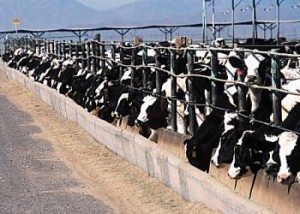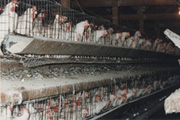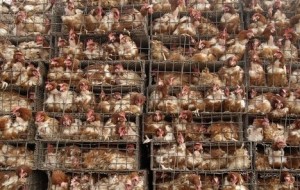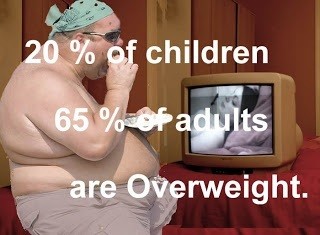The true cost of cheap food
With the economic globalization it comes growing understanding of the undeniable fact that profit-based economy does not correlate with well-being and happiness of humanity. Moreover, it becomes more and more obvious that profit-driven economy is an unfortunate suicidal course and that a resource-based economy is the only alternative.
 By the Wikipedia definition, factory farming is raising livestock in confinement at high stocking density, where a farm operates as a business, a practice typical for modern agribusiness. Confinement at high stocking density requires antibiotics and pesticides to mitigate the spread of disease and pestilence exacerbated by these crowded living conditions. A 2011 study reported that nearly half of the meat and poultry sold in U.S. grocery stores (47%) was contaminated with Staphylococcus aureus, and more than half of those bacteria (52%) were resistant to at least three classes of antibiotics. According to the Worldwatch Institute, 74% of the world’s poultry, 43% of beef, and 68% of eggs are produced this way. There have been growing concerns regarding whether factory farming is sustainable and ethical. It’s perfectly understandable why for the ethical reasons alone millions of people choose vegetarian and vegan diets. Not yet a vegetarian? Watch this shocking video: The Truth Behind Meat Production
By the Wikipedia definition, factory farming is raising livestock in confinement at high stocking density, where a farm operates as a business, a practice typical for modern agribusiness. Confinement at high stocking density requires antibiotics and pesticides to mitigate the spread of disease and pestilence exacerbated by these crowded living conditions. A 2011 study reported that nearly half of the meat and poultry sold in U.S. grocery stores (47%) was contaminated with Staphylococcus aureus, and more than half of those bacteria (52%) were resistant to at least three classes of antibiotics. According to the Worldwatch Institute, 74% of the world’s poultry, 43% of beef, and 68% of eggs are produced this way. There have been growing concerns regarding whether factory farming is sustainable and ethical. It’s perfectly understandable why for the ethical reasons alone millions of people choose vegetarian and vegan diets. Not yet a vegetarian? Watch this shocking video: The Truth Behind Meat Production
The human cost of animal suffering
Until a couple of years ago I believed that the primary reasons to eat less meat were environment- and health-related, and there’s no question that those are valid reasons. But animal welfare has since become a large part of my thinking as well. And I say this as someone not known to his friends as an animal-lover. If we want a not-too-damaged planet to live on, and we want to live here in a way that’s also not too damaged, we’re better off eating less meat. But if we also want a not-too-damaged psyche, we have to look at how we treat animals and begin to change it. …The most publicized stories about industrial agriculture represent the exceptions that prove the rule: the uncommon torture of animals by perverse individuals in rogue operations. But torture is inherent in the routine treatment of animals as widgets, and the system itself is perverse. What makes “Every Twelve Seconds” different from (for example) a Mercy for Animals exposé is, says Pachirat, “that the day-in and day-out experience produces invisibility. Industrialized agriculture perpetuates concealment at every level of the process, and rather than focusing on the shocking examples we should be focusing on the system itself.” See other publications by Mark Bittman.
Eggs from caged hens
Battery cages are small wire cages where about 95 percent of laying hens spend their entire lives; each hen is given about 67-76 square inches of space (a standard sheet of paper measures 94 square inches). To get a sense of a hen’s life in a battery cage, imagine spending your entire life in a wire cage the size of your bathtub with four other people. You wouldn’t be able to move, so your muscles and bones would deteriorate. Your feet would become lacerated. You would go insane. That’s precisely what happens to laying hens. See more articles by Bruce Friedrich.
The true cost of cheap food
A family story
A couple of nights ago, I was having supper with my parents in Bath. We ended up talking about Hugh Fearnley-Whittingstall’s Chicken Run, which featured the plight of the infamous £2.50 Tesco chicken and the enormous difficulty he had persuading residents of his local Dorset town to pay more than twice as much for a free range alternative bird.
 In our discussion, I explained to my Mum that if only the ‘hidden costs’ associated with the production of this apparently cheap chicken were factored into the equation, the real price would be much closer to that of the organic or free range bird that Hugh promoted to town residents. There is a surprisingly long list of these hidden social and environmental costs which have a monetary value, including the impact of greenhouse gas emissions from forests cleared to grow the soya and maize crops on which cheap chickens feed; costs associated with cleaning up the pollution from the nitrates and pesticides used to grow these crops, along with the manure produced by the birds; costs of treating infection, and even deaths, due to antibiotic resistance that arises from their prophylactic use in intensive production chicken sheds; and, more obvious economic impacts such as the disappearance of the small family farms that used to raise flocks of free range chickens, creating lots of rural jobs. These are just some of the ‘external’ costs of the ‘battery’ chicken.
In our discussion, I explained to my Mum that if only the ‘hidden costs’ associated with the production of this apparently cheap chicken were factored into the equation, the real price would be much closer to that of the organic or free range bird that Hugh promoted to town residents. There is a surprisingly long list of these hidden social and environmental costs which have a monetary value, including the impact of greenhouse gas emissions from forests cleared to grow the soya and maize crops on which cheap chickens feed; costs associated with cleaning up the pollution from the nitrates and pesticides used to grow these crops, along with the manure produced by the birds; costs of treating infection, and even deaths, due to antibiotic resistance that arises from their prophylactic use in intensive production chicken sheds; and, more obvious economic impacts such as the disappearance of the small family farms that used to raise flocks of free range chickens, creating lots of rural jobs. These are just some of the ‘external’ costs of the ‘battery’ chicken.
My Mum, who despite being 94 is still pretty sharp, said, “Well how much do you think that price would actually be if all those costs were incorporated into the Tesco chicken?” to which I replied, “This is what ‘true-cost accounting’ asks.” It’s perhaps the most pressing question to answer in the move towards sustainable food systems and a growing group of environmental scientists, activists and thinkers, myself among them, are getting closer to determining it. What needs to be understood is that it is not just intensive chicken production that incurs these hidden costs – there is a parallel story to be told with nearly all food using industrial production methods.
Damage caused by industrial food production
The SFT convened a meeting a few weeks ago, which brought together around 50 individuals with an interest in this critically important idea. The meeting, held in Kentucky, was sponsored by the Gates and McKnight Foundations and included some extraordinarily talented people like Sam Dryden, the agricultural director at Gates, Peter Seligmann, founder of Conservation International, Professor Ian Bateman, a member of the HM Treasury and UK Defra Natural Capital Committee, along with experts on soil carbon, endocrine disruption, the use of antibiotics in intensive livestock systems, pollution from corn and soy production in the Mississippi catchment area, and others.
 The aim was to identify the various areas where damage is caused by industrial food production – to climate change; to the depletion of natural resource capital; to biodiversity; to human health; in pollution; in the loss of rural employment – to name just a handful of obvious impacts. There needs to be an exact price fixed on these costs, so that we can then develop economic and policy instruments (both carrots and sticks) to ensure that in future the real cost of industrial food production is paid. Sustainable food producers would benefit by avoiding these costs, even making positive contributions by protecting natural resources and building environmental and social capital. (For the fundamental global solutions, see The Venus Project).
The aim was to identify the various areas where damage is caused by industrial food production – to climate change; to the depletion of natural resource capital; to biodiversity; to human health; in pollution; in the loss of rural employment – to name just a handful of obvious impacts. There needs to be an exact price fixed on these costs, so that we can then develop economic and policy instruments (both carrots and sticks) to ensure that in future the real cost of industrial food production is paid. Sustainable food producers would benefit by avoiding these costs, even making positive contributions by protecting natural resources and building environmental and social capital. (For the fundamental global solutions, see The Venus Project).
Needless to say, this is a huge challenge. But it’s well worth the effort to figure it out because the failure to apply the principles of true-cost accounting to our food systems is not a small issue. It actually constitutes the single biggest barrier to the transition towards a more sustainable model for the future. More and more people are now realizing how critical it is to understand the cost of our current industrialized food system.
The political obstacle
The problem is that bringing the idea of true-cost accounting to the foreground of political debate is a double edged sword for politicians. If the hidden costs associated with the production of the aforementioned £2.50 chicken were factored into the price tag, the effect would be quite dramatic. The price might even double! This would lead to food inflation, and for politicians, this is something to be avoided at all costs, especially during the current recession. The only effective antidote to counter this political inertia will be to ensure that the public are made fully aware of the enormous damage to the environment, with consequent climate change, and especially to human health, that results from our present food systems. True-cost accounting provides the necessary justification to pay more for food by making visible the long term damage to our planet and our health that we pay for each time we opt for the cheap chicken.
See also what Prince Charles recently said: “The price of apparently cheap food is costing nothing less than the Earth.”
Category: Uncategorized







To help explain our point of view on the fundamental issues, I created the graphic below to try to explain part of what economists are calling full, or true cost accounting . It is a method that assesses not just immediate cost advantages, but future outlays and long-term costs and benefits as well. Joyce, Doctor Grandma, is trying to encourage you to put different foods on your table, and make them yummy. She is suggesting how you will reap the benefits of healthier, happier lives and lower health care costs. The meals she suggests might actually cost less in both the short run and the long run, (see Budget Friendly Homemade Soup ). But if you compare the cost of a Doctor Grandma’s whole-grain pancake mix and its high quality olive oil against a refined white flour pancake mix with no oil, there is a big difference in cost at the checkout counter. Full cost accounting gives a more complete picture.
The problem is that bringing the idea of true-cost accounting to the foreground of political debate is a double edged sword for politicians. If the hidden costs associated with the production of the aforementioned £2.50 chicken was factored into the price tag, the effect would be quite dramatic. The price might even double! This would lead to food inflation, and for politicians, this is something to be avoided at all costs, especially during the current recession. The only effective antidote to counter this political inertia will be to ensure that the public are made fully aware of the enormous damage to the environment, with consequent climate change, and especially to human health, that results from our present food systems. True-cost accounting provides the necessary justification to pay more for food by making visible the long term damage to our planet and our health that we pay for each time we opt for the cheap chicken.
it costs €0.66 to produce 12 battery eggs, €0.82 to produce 12 barn eggs and €0.98 to produce 12 free-range eggs. So 12 free-range eggs cost €0.32 more to produce than 12 battery eggs, and 12 barn eggs cost € 0.16 more to produce than 12 battery eggs. This means that one free-range egg costs 2.6 cents more to produce than a battery egg, and a barn egg costs 1.3 cents more to produce than a battery egg. The Commission’s report concludes that, if costs were to increase by 20%, which it says is the type of percentage increase in terms of variable costs that producers are likely to face as a result of switching to free-range, the industry will potentially suffer a loss of producer surplus of €354 million (EU-25).